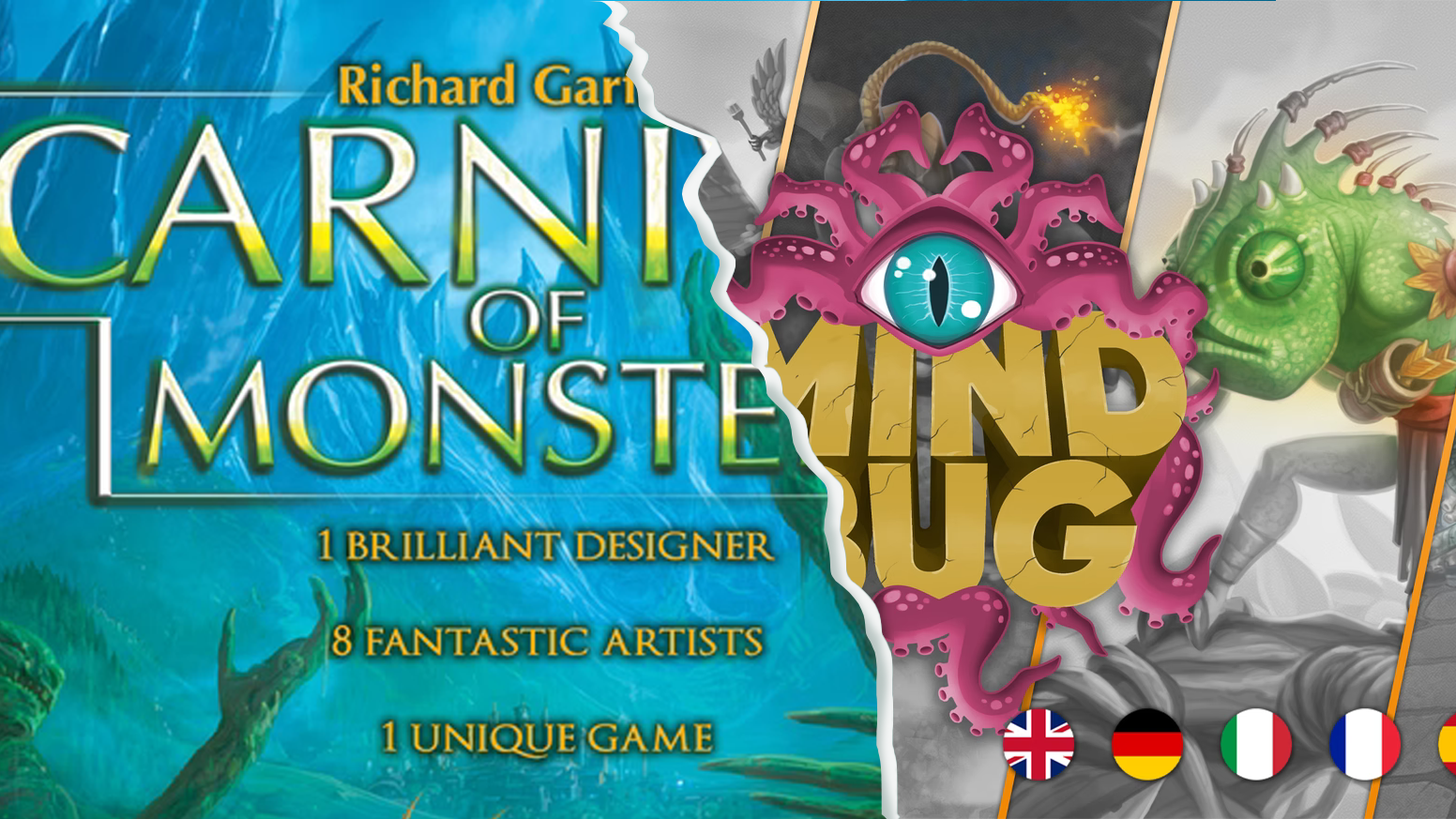A Tale of Two Garfields
There are a few designers’ whose games I’ll always pick up off the shelf. Near the top of that list is Richard Garfield. Famed creating Magic: The Gathering, he has about 40 unique (non-expansion) credits on Board Game Geek, including beloved games like Roborally, Bunny Kingdom, and King of Tokyo.
The recent Kickstarter Mindbug (you can late pledge here), designed by Richard Garfield, got me thinking about what drives the success of a campaign, and just how important name recognition is.
Let’s look at two Richard Garfield games Kickstarters, and see what we can learn. I present to you Garfield vs Garfield, Carnival of Monsters vs Mindbug.
The Basics
Carnival of Monsters was a 2017 Kickstarter by AMIGO Spiel and Freizeit GmbH. It lasted 31 days on Kickstarter, and raised only 24% of its €222k goal. AMIGO has been making games since 1980, and I believe Carnival was their first (and only) Kickstarter.
The project was focused on covering high development costs for the game, specifically artwork from some of Magic: The Gathering’s most beloved illustrators.
Carnival of Monsters failed to fund, and was later published in 2019.
Mindbug was designer Marvin Hegen’s first Kickstarter, and first game. He hosts the Nerdlab Podcast – and to be frank a co-design on your first game by Richard Garfield is absolutely awesome. Mindbug ran a more traditional Kickstarter, with gameplay videos, free digital playtesting, and a review campaign.
There is a lot to unpack between the two campaigns, but a few key differences really stand out to me.
Funding Goals & Development
Carnival of Monsters had a €222k funding goal, compared to Mindbug at €5,000.
The rationale for the high goal, was to fund artwork. A major marketing point of the Carnival of Monsters campaign was the inclusion artwork from some of the most famous names in early Magic: The Gathering illustration.
With 104 cards in the base game and 86 additional cards in stretch goals, this isn’t cheap.
Conversely Mindbug didn’t ask backers to fund the development of the game. It is unclear what remains to be done on the illustration front, but it looks like most, if not all, of the art assets are done.
This reduces time to delivery, and risk to backers.
While many games need additional post crowdfunding development – it adds another layer of risk to backers, and can make it harder to show off the game. Our philosophy is to fund the full development of our games pre-Kickstarter, so that the only use of proceeds is manufacture and fulfilment.
Per Unit Cost
The second difference that jumps out to me is the per backer average pledge. Carnival of Monster’s base pledge level was €45, and the average pledge was €63. Whereas, you can buy a base copy of Mindbug for only €15, with a €32 average pledge.
Considering that high cost games fund well (I’ve paid over $100 for big box games), unit price just needs to be consistent with consumer expectations of what they are getting.
And there are substantial component differences between the games. Carnival of Monsters is 2-5 players with punchboard and a heavier component lift, whereas Mindbug is a 2-player dueling card game.
It’s About the Game
The most striking difference between the campaigns was their focus.
Carnival of Monsters pitched a designer, and a promise of great artwork. The promotional video was 42 seconds long, with no mention of gameplay. There was no method for backers to test the game, and the campaign didn’t even have a rulebook published at the time of launch.
On the other hand, Mindbug had free testing on Tabletop Simulator and Tabletopia, a published rulebook, and a nearly three-minute promotional video with animation, and a focus on gameplay.
What key differences stand out to you between the campaigns, what drove one to succeed, and the other to fail?



